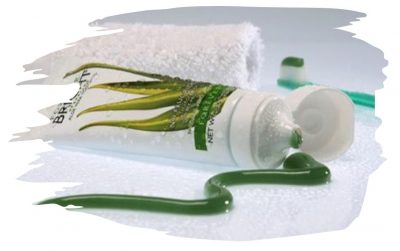Dental disease is very common in dogs as they get older, they become more at risk from the age of 3 onwards. Although this is a common ailment with all dogs, some breeds are at risk at getting it worse than others.
Those more at risk are Terriers, Sighthounds and Flat-faced breeds.
Dental treats and sticks can be helpful but most dogs will get some degree of dental disease if you don’t brush their teeth.
Halitosis (bad breath) is very unpleasant and can become unbearable, in some cases, long term problems can develop which are irreversible. These bad smells can fill your home with an unwanted aroma! (and not a very nice one!).
You could also be faced with a very large vet bill for dental treatment, which will leave your pocket drained and your dog ‘gummy’.
The main concern is the pain your little friend will be in. Rotting teeth and disease are just slow torture and dogs, unlike humans will not show pain, they will just live with it which is unfair and cruel.
Some dogs just do not want their teeth to be brushed, and others may even bite if you go near their mouth. Please don’t give up at this stage, there are certain methods that you can try, and if they don’t work, seek advice from your vet.
My dog doesn’t allow me to use a toothbrush but, she allows me to use my finger. I put a little ‘Forever Bright Toothgel‘ on my finger and apply it to her teeth – she also loves the minty taste, which also makes her breath fresh and minty 🙂
If you are using your finger, I recommend putting a finger glove toothbrush on – it helps protect your finger from being bitten.
Brushing your dogs teeth – step by step
It is best to brush your dogs teeth daily however, 1-3 times per week is good
Choose a time when your dog is relaxed
STEP 1 – Introduce the toothgel
- It is best to introduce your dog to teeth cleaning from a pup however, you can still follow the below steps with adult dogs
- Put a small amount of toothgel on your finger and allow your dog to lick it away. He/she should like the minty taste and be very keen to lick it all up
STEP 2 – Getting used to you
- Put a small amount of toothgel on your finger
- With your free hand, gently hold his/her muzzle closed allowing a small gap to fit your finger in
- Insert your finger into your dogs mouth under the lip on the side of the face
- Rub the toothgel on your dogs teeth – be careful at this stage as your dog may be tempted at taking a chunk out of your hand or if an adult dog, biting your finger off
- It may be best to start with just a few teeth and once your dog gets used to you touching his/her teeth, you can gradually increase until you brush all teeth
- You may witness some resistance from your dog, this should reduce over time and eventually stop through training and a little patience. If you find your dog does not allow you to brush or becomes aggressive, you may need to seek some behavioural advice.
STEP 3 – Time to introduce the toothbrush?
Put some toothgel on your toothbrush – it may be wise to push the toothgel down into the bristles (to stop it from falling off the brush)
With your free hand, gently hold his/her muzzle closed to prevent the dog chewing on the toothbrush. Gently lift the lip and insert the toothbrush.
It is best to start with the canine teeth, then the molars at the back of the mouth, leaving the incisors at the front of the mouth to last. (The incisors are the most sensitive of all the dogs teeth)
The upper-teeth are always best to start with
Once you have brushed one side of the mouth, it would be best to change hold of the muzzle and lift the lip on the other side to complete the other side of the mouth
Your dog will eventually get used to having his/her teeth brushed and will actually enjoy the experience.

